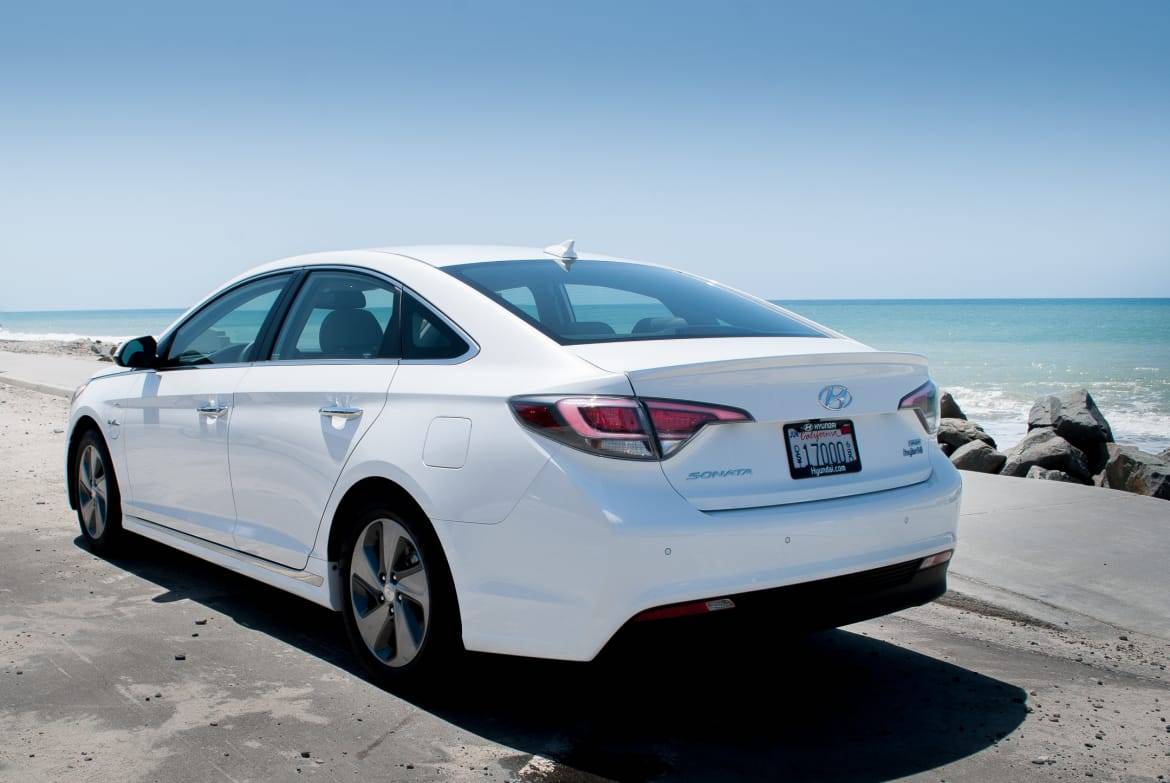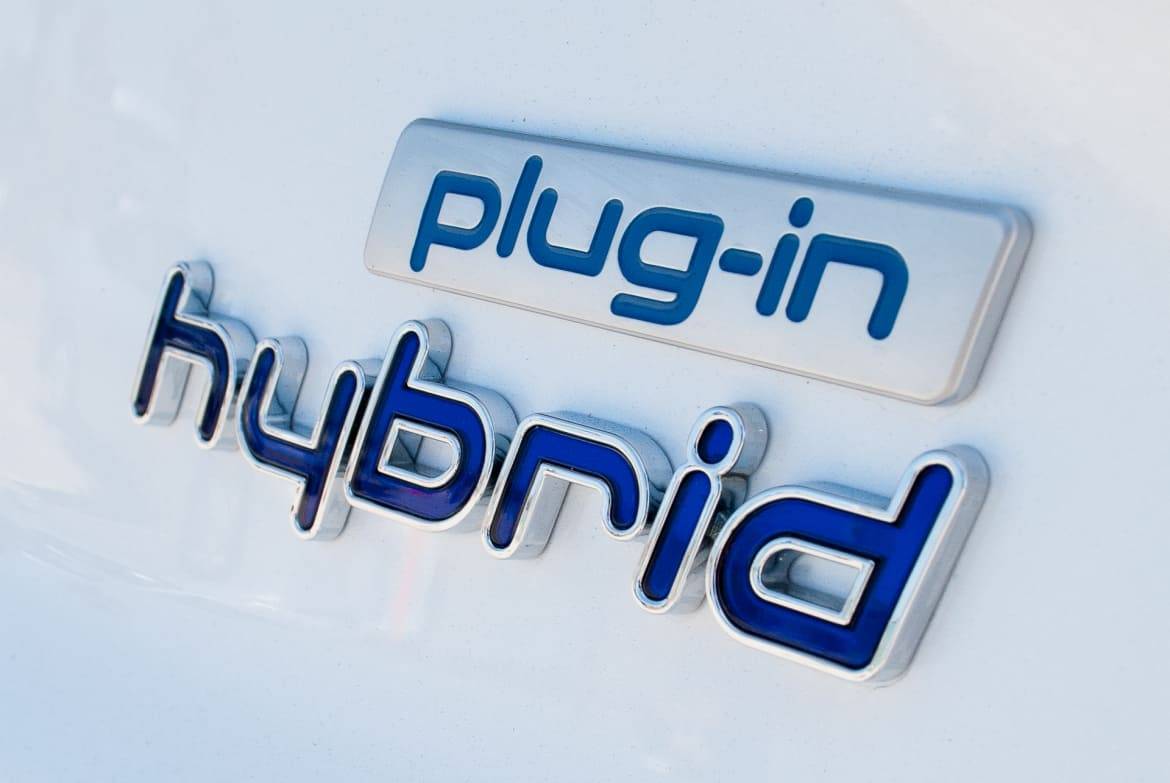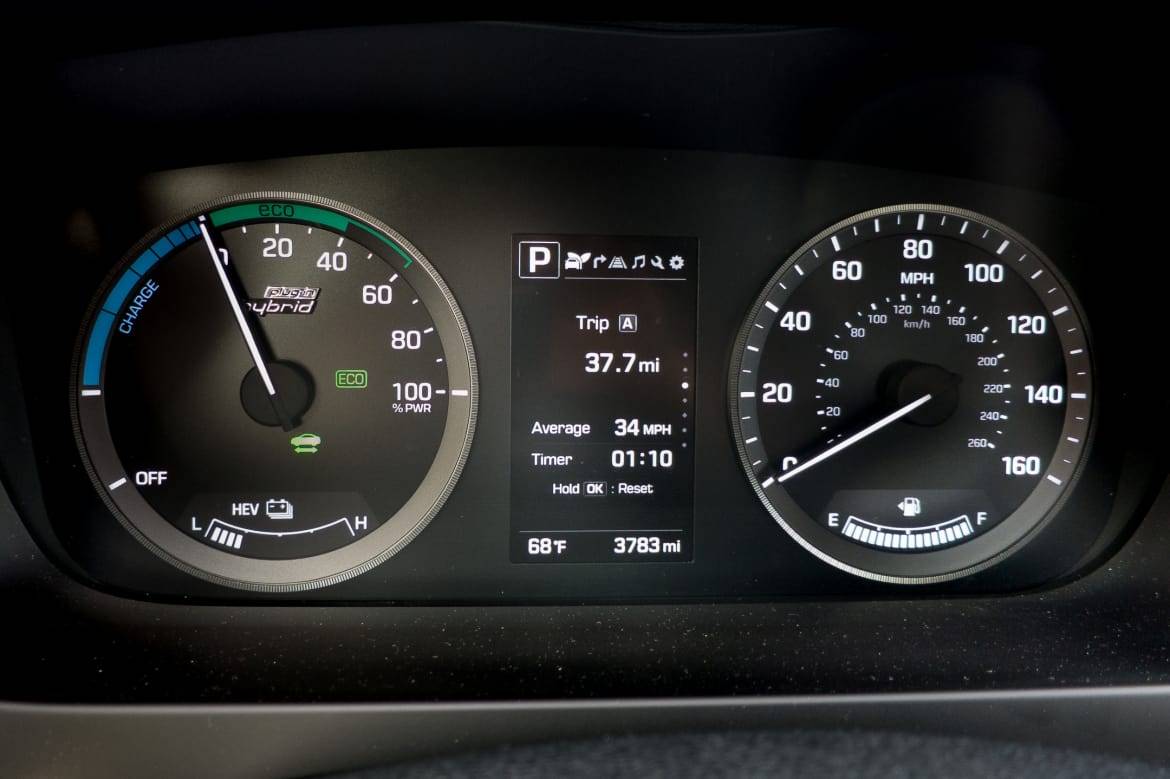2016 Hyundai Sonata Plug-in Hybrid: Real-World Fuel Economy


CARS.COM — Just a few years ago the idea of a plug-in electric car still was science fiction. But not only are plug-in EVs now familiar to just about everyone, many hybrid vehicles also offer a plug-in variant, such as the plug-in version of the 2016 Hyundai Sonata Hybrid. The Sonata PHEV is rated to achieve 27 miles of electric-only range; how did it handle my test loop?
Related: 2016 Hyundai Sonata Hybrid, Plug-in Hybrid: First Look
A solid midsize family car, the Sonata has been available as a hybrid since the last generation, and now for 2016, you can get a plug-in model, too. It’s powered by a 2.0-liter four-cylinder engine mated to an electric motor for a total of 202 horsepower. It puts that power through a six-speed automatic transmission, not a continuously variable automatic transmission like many competitors. Supplementing the hybrid system is a much bigger battery than the one in the regular Sonata Hybrid — a 9.8 kilowatt-hour lithium-ion pack replaces the Hybrid’s 1.6 kWh pack.

The plug-in’s bigger battery can propel the Sonata PHEV on electric power alone at all speeds – if you’re light with your right foot. Despite having a button that allows you to switch between “EV mode” and “Hybrid mode,” the Sonata will employ the internal combustion engine even in EV mode if you place too great a demand on the system for acceleration or speed.
I have a drive loop that I like to do for plug-in hybrid vehicles to see just how far they can get on electric power alone before the engine kicks in. It’s about 26 miles from my house to a favorite BBQ joint in Dearborn, via a mixture of urban streets and 55-mph stretches of rural four-lane highway. I took the fully charged Sonata PHEV to see how far it could get on electric power alone.

It’s a big car, with tons of room in front and in back, which makes it feel a little odd that it’s zipping along silently in electric mode. Acceleration in EV mode is typically electric-car quick — many people don’t realize that the characteristics of electric motors mean that all of their torque is available from a stop. This means that acceleration is zippy around town, but you’ll have to temper your lead foot to get maximum miles out of your battery pack.
In urban environments, the Sonata PHEV is easy to drive and has no problem keeping up with traffic while still keeping the tachometer’s handy economy meter in a happy green “eco” band. The biggest issue is brake performance, which frankly is awful. The Sonata PHEV employs regenerative braking that engages in the first inch or so of brake travel, using the electric motor as a generator and offering resistance to slow the car. You try to get used to it, but it feels artificial. It uses that regen to assist in slowing the car, but it doesn’t seem to be operational under 5 mph, at which point the brakes grab quickly and strongly, throwing everyone forward as you come to a stop. It’s very difficult to brake smoothly.
I did not employ the climate control system at all, as turning it on immediately brings the gas engine into play. Temperatures were in the 60’s, traffic was light and speeds ranged from 25 mph in town to 55-60 mph on the highway. The windows in the car were closed to keep the critical aerodynamic efficiency up, aside from cracking a window now and then to let some fresh air into the cabin. Driven calmly and purposefully, I was able to achieve a surprising 37.7 miles of electric range before the battery was depleted to the point at which EV mode was no longer an option. That’s several miles more than the sedan’s official rating of up to 27 miles.

The overall result from the Sonata PHEV is impressive. To get that kind of range with normal use makes the car almost as good as the last-generation Chevrolet Volt, albeit with real room for five people in far more comfortable surroundings. The Sonata’s trunk space takes a hit, however, with the larger battery pack eating into available cargo space and negating the ability to fold the rear seatbacks. That cargo limitation and the funky braking performance really are the only tradeoffs, however, if you’re looking for a big sedan with real-world EV usability.

Detroit Bureau Chief Aaron Bragman has had over 25 years of experience in the auto industry as a journalist, analyst, purchasing agent and program manager. Bragman grew up around his father’s classic Triumph sports cars (which were all sold and gone when he turned 16, much to his frustration) and comes from a Detroit family where cars put food on tables as much as smiles on faces. Today, he’s a member of the Automotive Press Association and the Midwest Automotive Media Association. His pronouns are he/him, but his adjectives are fat/sassy.
Featured stories




